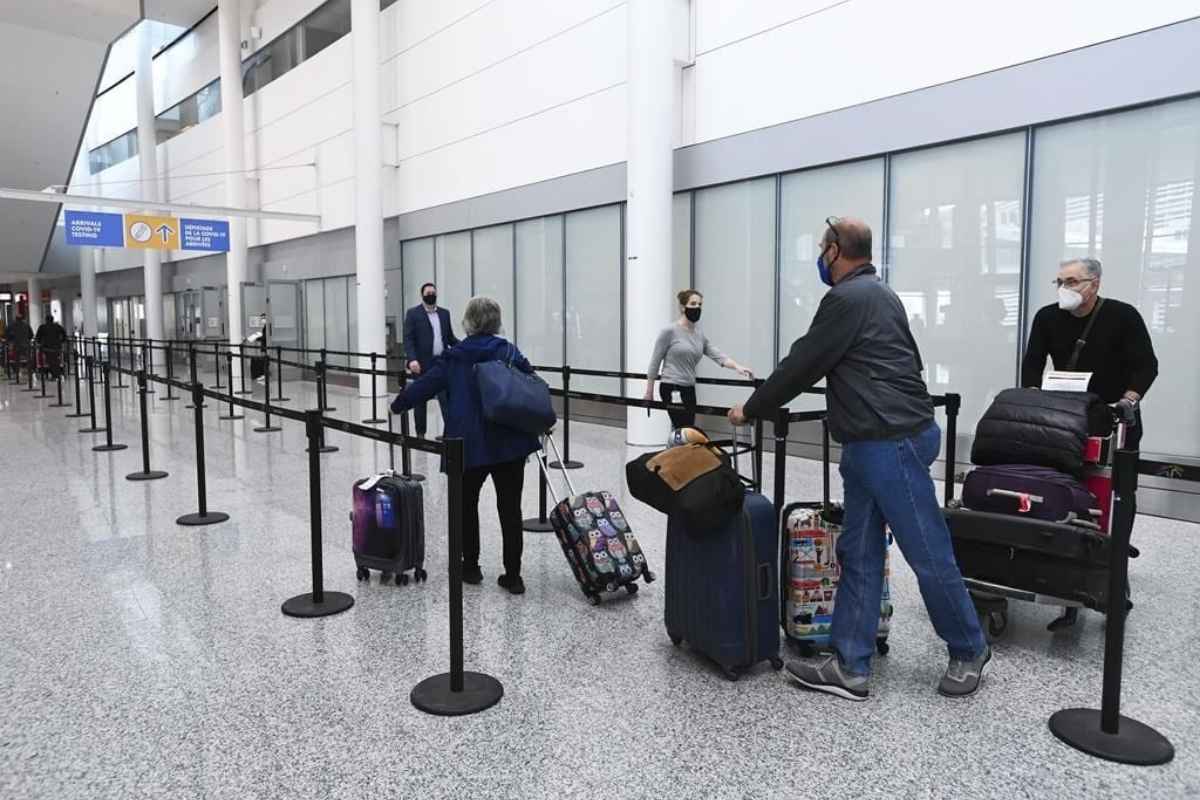Canada Digital Nomad Visa joins the growing global movement, as 65 countries now offer specialized visas for remote workers. This new program allows foreign remote workers to live and work in Canada for up to six months without requiring a work permit while contributing to local economies.
As part of Canada’s Tech Talent Strategy, this initiative aims to position the country as a global hub for tech talent. Digital Nomad Visa Canada offers more than just temporary residence – it provides pathways to permanent residency for those who secure positions with Canadian companies. With average internet speeds of 201.32 Mbps and ranking as the 12th most visited country by digital nomads, Canada presents compelling opportunities for remote workers. This guide examines Does Canada has a Digital Nomad Visa, explores Digital Nomad Visa Canada Eligibility criteria, and reveals the practical aspects of working remotely in Canadian cities.
Canada Digital Nomad Visa in 2025 Explained
Unlike many countries offering specific visa programs, the Canada Digital Nomad Visa isn’t actually a separate visa category. In reality, it’s a pathway that allows remote workers to enter Canada as visitors for up to 6 months while continuing to work for employers or clients outside Canada. This arrangement has gained significant attention as part of Canada’s broader strategy to attract global talent.
What Canada actually offers for remote workers
The term “Canada Digital Nomad Visa” can be misleading. Essentially, digital nomads don’t need a dedicated work permit to operate remotely from Canadian soil. Instead, they can enter under visitor status, which typically grants a stay of up to 6 months. This arrangement specifically targets individuals who:
- Work for employers outside Canada
- Can perform their job entirely remotely
- Enter Canada with appropriate travel authorization (TRV or eTA)
- Intend to leave at the end of their authorized stay
- Have sufficient funds to support themselves
This visitor-based approach differs from dedicated digital nomad visa programs offered by other countries. Digital Nomad Visa Canada Eligibility focuses primarily on demonstrating that your work remains tied to foreign employers or clients, not Canadian ones.
The Tech Talent Strategy explained
The Canada Digital Nomad Visa framework exists within the larger Tech Talent Strategy announced by the Honorable Sean Fraser, former Minister of Immigration, Refugees and Citizenship. This strategy represents Canada’s recognition of its emerging role in global tech talent recruitment and aims to attract skilled professionals who might eventually transition to permanent residents.
The Tech Talent Strategy consists of four key pillars:
- Promoting Canada as a destination for digital nomads
- Improving existing immigration programs beneficial to tech workers
- Creating innovation pathways for entrepreneurs
- Streamlining processes for highly skilled workers
Fraser noted that the strategy would “allow people who have a foreign employer to come live in Canada for up to six months, live and spend money in communities in this country and, should they receive a job offer while they’re here, we’re going to allow them to continue to stay and work in Canada”.
Uniquely, the Canada Digital Nomad Visa approach actively encourages participants to seek employment with Canadian companies. Unlike traditional digital nomad programs that keep workers separate from local job markets, Canada views this as a potential pathway toward addressing labor shortages in specialized fields.
Recent policy changes affecting digital nomads
On January 31, 2024, Immigration, Refugees, and Citizenship Canada (IRCC) released guidelines specifically clarifying requirements for digital nomads. These guidelines reaffirmed the definition of digital nomads and specified the 6-month duration of entry. Does Canada have a Digital Nomad Visa? Not technically, but these guidelines formalized the existing visitor pathway.
Additionally, the Canadian government implemented a temporary policy allowing visitors to apply for work permits from within Canada without having to leave the country. This policy remains in effect until February 28, 2025, providing greater flexibility for those who secure job offers during their stay.
However, by late 2024, Canada modified its approach toward digital nomads seeking Canadian jobs, citing housing shortages and public concerns over immigration levels. The country has begun reducing both permanent and temporary immigration levels to address economic and social challenges.
Furthermore, remote work policies within Canada have continued evolving. Three federal unions launched a national campaign promoting remote work “as the future of work for millions of workers”. According to their surveys, 90% of respondents want to work remotely “as much as possible or have a flexible option”.
For digital nomads considering the Canada Digital Nomad Visa Requirements, it’s important to note that while there’s no specific income requirement, you must demonstrate sufficient funds to sustain yourself during your stay. Additionally, health insurance is highly recommended, although not mandatory.
Digital Nomad Visa Canada Requirements
Determining your eligibility for the Canada Digital Nomad Visa begins with understanding that this isn’t a traditional visa. Contrary to what the name suggests, it’s an exemption that allows qualifying remote workers to stay in Canada for up to six months without obtaining a work permit.
Who qualifies to work remotely in Canada
The Canada Digital Nomad Visa primarily targets individuals who can perform their work from anywhere in the world. First and foremost, you must be eligible for visitor status in Canada and possess a valid passport or other acceptable travel documents. Beyond this, you must be able to demonstrate that you’re genuinely a digital nomad.
What exactly constitutes a digital nomad under Canadian guidelines? Primarily, you must be either employed by a foreign company or self-employed, providing services exclusively to clients outside of Canada. Moreover, your work must be performable entirely remotely. The Canadian government specifically states that applicants must be able to “perform their job remotely from anywhere in the world” on behalf of a foreign employer.
Significantly, the Canadian Digital Nomad Visa program doesn’t restrict eligibility to tech workers despite being part of the Tech Talent Strategy. Generally, any remote worker can apply regardless of industry, provided they meet the basic criteria. Does Canada have a Digital Nomad Visa for specific professionals? No – the program is intentionally broad.
Income and employment verification
When applying for entry under the Canada Digital Nomad Visa Requirements, you’ll need to provide clear evidence of your employment status. This typically includes an offer letter and recent payslips from your current employer, plus letters verifying your work experience. Self-employed individuals should prepare documentation proving their business operations occur outside Canada.
Surprisingly, there is no minimum income requirement for Digital Nomad Visa Canada Eligibility. Instead, you simply need to demonstrate that you have sufficient funds to support yourself throughout your stay. This can be done by providing:
- Bank statements covering the past six months
- Proof of stable income sources
- Evidence of financial stability
Border officers will typically want to see that you have enough money to cover your living expenses during your stay and that you have booked travel out of Canada before your six-month authorization expires. Consequently, having proof of return travel is highly recommended.
Health insurance and other prerequisites
Healthcare represents an important consideration for remote workers entering Canada. As a digital nomad, you won’t be eligible for Canada’s public healthcare system. Therefore, obtaining comprehensive private health insurance is essential before arrival. The insurance should cover all medical expenses for the entire duration of your stay.
Additionally, you’ll need to maintain a clean criminal record. A background check or criminal record certificate from your home country or current country of residence may be required during the entry process. This document should confirm you have no criminal convictions.
Proof of accommodation can further strengthen your application. While not always mandatory, having documentation showing where you’ll be staying in Canada—whether through rental agreements or letters from friends or family hosting you—can help demonstrate your legitimate intentions.
The Canada Digital Nomad Visa application doesn’t typically require biometric information upfront, though this could be requested in certain cases. Ultimately, border officers have final discretion regarding entry, so ensuring you have comprehensive documentation is the safest approach.
Application Process for Remote Work in Canada
The application journey for the Canada Digital Nomad Visa varies depending on your citizenship. First of all, it’s important to understand that digital nomads don’t actually need a work permit to work remotely from Canada for up to six months.
Temporary Resident Visa (TRV) application steps
If you’re from a non-visa-exempt country, you’ll need to apply for a Temporary Resident Visa. The TRV application requires convincing immigration officers that your remote work doesn’t compete with Canadian citizens or permanent residents. Your application should clearly demonstrate that you work exclusively for employers outside Canada and won’t enter the Canadian labor market.
For the Canada Digital Nomad Visa, you’ll need to provide proof of sufficient funds and evidence that you intend to leave after your authorized stay. The TRV can be valid for up to 10 years or until your passport expires, though digital nomads typically receive a 6-month authorization.
Electronic Travel Authorization (eTA) process
If you’re from a visa-exempt country, the Canada Digital Nomad Visa process is more straightforward. You’ll need to apply for an Electronic Travel Authorization, which costs only CAD $7. The eTA application process includes these steps:
- Gather your valid passport, credit/debit card, and email address
- Complete the online form (which cannot be saved, so have all information ready)
- Pay the fee immediately after completing the form
- Receive confirmation via email (most applications are approved within minutes)
- If additional documents are needed, you’ll receive instructions within 72 hours
An approved eTA remains valid for five years or until your passport expires. Does Canada have a Digital Nomad Visa with a faster process? The eTA system is certainly the quicker option for eligible nationalities.
Required documentation and biometrics
For both application types, you’ll need several key documents to support your Digital Nomad Visa Canada Eligibility. These typically include:
- A valid passport
- Bank statements showing financial resources (covering at least six months)
- Employment offer letter and recent pay stubs
- Updated curriculum vitae
- Work experience certificates
- Proof of accommodation in Canada
Biometrics (fingerprints and photo) are required for most applicants between ages 14 and 79, with the notable exception of those applying for an eTA. The biometrics fee is CAD $85 for individuals or a maximum of CAD $170 for families applying together.
The Canada Digital Nomad Visa Requirements include submitting biometrics in person at an official collection service location within 30 days of receiving instructions. Once all requirements are met, border officers make the final decision about your entry at the Canadian border.
Financial Realities of the Canada Digital Nomad Visa

Budgeting properly for your Canada Digital Nomad Visa journey requires understanding several financial aspects before packing your laptop and winter coat. From initial application costs to daily expenses and tax considerations, here’s what you need to know about the financial landscape.
Application fees and initial costs
The Canada Digital Nomad Visa application process comes with several upfront expenses. Visa application fees typically range from CAD $100 to $500, depending on your nationality. Additionally, you’ll need to budget for the biometric fee of CAD $85 per person or CAD $170 per family.
Particularly important is securing appropriate health insurance since Canada’s universal healthcare isn’t available to visitors. This represents another significant initial cost, as digital nomads must arrange private coverage for their entire stay.
Cost of living across different Canadian cities
The cost of living varies dramatically depending on where you settle with your Canada Digital Nomad Visa. Major cities like Toronto and Vancouver are notably expensive, with one-bedroom apartments in city centers averaging CAD $2,149 and CAD $2,629 respectively.
Comparatively, smaller cities offer much more affordable options. Moncton, Halifax, and Winnipeg stand out with costs well below the national average. For example, a one-bedroom apartment in Montreal costs approximately CAD $1,520 monthly. Monthly expenses excluding rent average around CAD $1,383-$1,496 across different cities.
Digital Nomad Visa Canada Eligibility doesn’t include any minimum income requirements. As long as you can demonstrate sufficient funds to support your lifestyle, you’re free to enter the country.
Tax implications for digital nomads
Does Canada have a Digital Nomad Visa with favorable tax treatment? The tax situation depends primarily on your length of stay. If you remain in Canada for less than 183 days in a calendar year, you generally won’t be considered a tax resident.
Important to realize is that Canadian tax residents must report their worldwide income to the Canada Revenue Agency. Given that Canada has tax treaties with over 90 countries, digital nomads can often claim foreign tax credits to avoid double taxation.
Canada Digital Nomad Visa Requirements don’t include specific tax provisions, but understanding your potential obligations is crucial. For those staying under six months, you typically won’t need to worry about Canadian taxes if you’re working for foreign employers. However, once you cross the 183-day threshold, your entire global income becomes subject to Canadian taxation.
Extending Your Stay Beyond Six Months

The initial six-month period granted with the Canada Digital Nomad Visa might seem too short for those falling in love with Canadian culture and landscapes. Luckily, there are several pathways to extend your Canadian adventure.
Legal options for longer stays
The most straightforward option for extending your Canada Digital Nomad Visa stay is applying for a visitor record. This document isn’t a visa but allows you to remain in Canada longer as a visitor. Importantly, you must apply before your current status expires, ideally at least 30 days in advance. After applying online through the Immigration, Refugees and Citizenship Canada website, you’ll need to visit a biometrics collection center to submit fingerprints and a photo.
Visitors who remain in Canada beyond six months without proper documentation risk violating Canadian immigration rules. Additionally, those exceeding their authorized stay may be deemed residents for tax purposes unless their home country has a specific tax treaty with Canada.
Transitioning to other visa types
The Canada Digital Nomad Visa offers unique opportunities for transitioning to other immigration pathways. Digital nomads who receive job offers from Canadian employers can apply for temporary work permits. These permits can potentially be extended up to three years.
Does Canada have a Digital Nomad Visa that leads to permanent residency? Indeed, depending on how much time you spend in Canada, you might qualify for permanent residency or even citizenship. Permanent residency requires living in Canada for 730 days within five years, while citizenship demands 1,095 days of Canadian residence in the same timeframe.
Other pathways include Express Entry for skilled workers, the Startup Visa for entrepreneurs, and the Global Skills Strategy for those with specialized job offers.
Border runs and re-entry strategies
Digital Nomad Visa Canada Eligibility allows for creative approaches to extending stays. Some digital nomads utilize “border runs” – temporarily leaving Canada before returning with fresh visitor status. Nevertheless, immigration officers have discretion regarding re-entry, and frequent border runs may raise suspicions about your intentions.
Canada Digital Nomad Visa Requirements stipulate that if you plan to travel outside Canada or the United States during your stay, you’ll need a valid entry document to return. Furthermore, if your passport received an entry stamp, you must leave by that date.
Ultimately, Digital Nomad Visa Canada provides flexibility for those wanting to experience Canadian life while maintaining their remote careers.
Canada Digital Nomad Visa Frequently Asked Questions
How long can digital nomads stay in Canada?
Digital nomads can typically stay in Canada for up to 6 months under visitor status. However, the exact duration may vary based on the border services officer’s decision at the port of entry.
What are the main requirements for working remotely in Canada?
To work remotely in Canada, you must be employed by a foreign company, have sufficient funds to support yourself, be able to perform your job entirely remotely, and enter Canada with appropriate travel authorization (TRV or eTA).
Is there a specific digital nomad visa for Canada?
Canada doesn’t offer a dedicated digital nomad visa. Instead, remote workers can enter under visitor status, which allows them to stay and work remotely for up to 6 months without needing a separate work permit.
Can I extend my stay in Canada as a digital nomad?
Yes, you can extend your stay by applying for a visitor record before your current status expires. Additionally, if you receive a job offer from a Canadian employer, you may be eligible to apply for a temporary work permit.
Do digital nomads need to pay taxes in Canada?
Generally, if you stay in Canada for less than 183 days in a calendar year, you won’t be considered a tax resident. However, if you exceed this threshold, your global income may become subject to Canadian taxation.
What are the primary requirements for a digital nomad to stay in Canada?
The primary requirement is to obtain visitor status, either through an eTA or TRV. You’ll need a valid passport, proof of sufficient funds to support your stay, and evidence of your intent to return to your home country. It’s also highly recommended to have comprehensive health insurance for the duration of your stay. When applying for the initial visitor status, proving you have ties to your home country is very important.
Can a digital nomad work for a Canadian company while in Canada?
Yes, Canada is showing that it is open to digital nomads working for Canadian companies. If a digital nomad secures a job offer from a Canadian employer, they can apply for a work permit. This pathway can potentially lead to longer stays and even permanent residency. This aspect distinguishes Canada’s approach from some other countries that strictly require digital nomads to work for foreign employers.
What are the tax implications for digital nomads in Canada?
If you stay in Canada for less than 183 days in a calendar year, you generally won’t be considered a tax resident. However, if you stay longer, you may become a tax resident and be required to pay taxes on your worldwide income. It is highly advised that anyone planning on staying in Canada for a long period of time, seek out professional tax advise. Tax laws are complex, and it is best to get personalized help.
Is there a pathway to permanent residency for digital nomads in Canada?
Yes, there are potential pathways. If a digital nomad secures a Canadian job and obtains a work permit, they may become eligible to apply for permanent residency through programs like the Express Entry system. The requirements for permanent residency vary, but they typically include factors such as work experience, education, and language proficiency. Therefore, beginning with a visitor status, and transitioning to a work permit, can be a first step to permanent residency.




